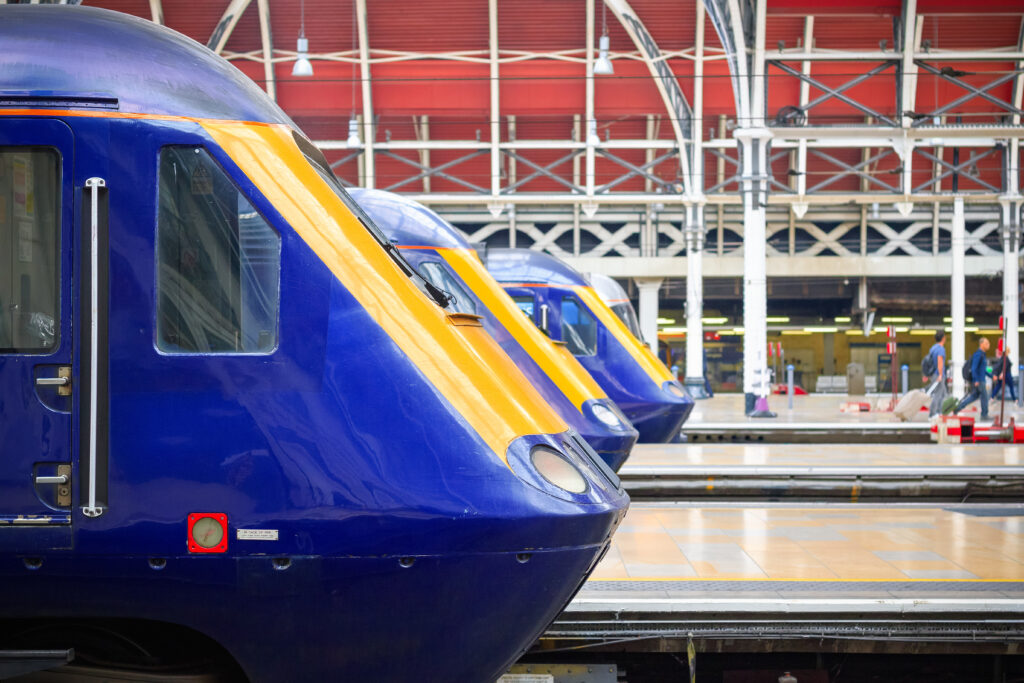TORONTO — Have rail, will travel.
Especially within destinations like Europe and Asia, more and more Canadian travellers looking to hop from one city to another are getting reacquainted with the joys of train travel.

Hauptbahnhof Central Station. Germany, Frankfurt
Hasn’t that always been the case? Not since low-cost carriers took off. With their bargain-basement fares, LCCs changed short-haul travel in short order.
For travel advisors who have been in the industry for a few decades then, the return to rail is a bit of a throwback.
After all, it wasn’t that long ago that the train was pretty much the only budget-friendly way to get from city A to B to C, in top travel destinations around the world.

Hall of Atocha train station by night, Madrid, Spain
Then along came the budget airlines. Discount carriers and LCCs are credited with opening up not just new destinations and new markets, but also making quick-hop getaways – especially within Europe – extremely easy, fast and absurdly affordable.
Since the debut of carriers like Ryanair in the mid-1980s (now Europe’s largest airline group, with a fleet of 594 aircraft), and surging ahead in the 1990s and 2000s, budget airlines soared so high, so quickly, that rail options in travel itineraries edged closer and closer to niche product.
Was it climate activist Greta Thunberg’s decision to sail across the Atlantic, rather than fly, for climate conferences in 2019, that really opened the world’s eyes to sustainable tourism? It was a watershed moment for the travel industry and, together with the pandemic in the years to come, inspiration for many to rediscover slower and more intentional travel.
And that included rail travel. The move to make slower and sustainable travel a reality was also buoyed by France’s decision to ban short-haul flights of less than 2.5 hours where rail alternatives exist. That new policy had its first anniversary this year.

London Paddington railway station
Q&A WITH AIR CANADA’S MARK GALARDO
Air Canada is intent on making air travel and rail travel co-exist beautifully with its intermodal strategy.
Earlier this month the airline announced it was broadening its intermodal travel program, extending its reach to new European destinations and launching its first air-to-rail connections in Asia.
The new options now available allow Air Canada passengers to easily combine flights with rail (and bus) connections across Italy, Spain, Britain, and South Korea.
With this year’s new expansion, Air Canada passengers will also be able to connect on Trenitalia to to up to 30 destinations in Italy, including Florence, Naples, and Reggio di Calabria, and on Spain’s Renfe rail network to 24 destinations in Spain (including popular cities such as Cadiz, Granada, Pamplona, and Zaragoza).
From London Heathrow, Air Canada customers can now access rail services with four operators: LNER, Avanti West Coast, Great Western Rail, and the TransPennine Express. Additionally, National Express, the UK’s leading scheduled coach operator, offers onward travel options from Heathrow.
And in South Korea, Air Canada flights to Seoul’s Incheon International Airport will connect travellers to KORAIL’s high-speed KTX trains via the AREX Express and Seoul Station. Connections are available to destinations including Busan, Gwangju, and Ulsan.
All of these 2024 additions are on top of Air Canada’s existing intermodal options in France, Germany, Switzerland and Austria, announced last year.
Travelweek connected with Mark Galardo, Air Canada’s Executive Vice President of Revenue and Network Planning, to find out more.
“The expanded offer will make it easy for our customers flying to and from our international hubs to add convenient rail or bus connections on a single itinerary. Our intermodal connections not only provide more choice, but also make available sustainable options for short-haul segments of their journey,” he said.
Travelweek asked about early successes.
“It’s exciting to see growth in our intermodal portfolio,” said Galardo. “We continue to diversify beyond the traditional airline ecosystem to include more bus and rail connections. While we are still in the initial stages of the product, we are pleased by the results we are seeing to date and have gotten positive feedback from our customers. We have worked closely with all stakeholders to ensure we provided a seamless connection experience.”
He added: “It’s important that we have the right arrangements and infrastructure in place to enable connections for our customers with the different rail systems to meet the growing demand. It is also about providing an expanded customer proposition.
“For instance, with five flights a day going to Frankfurt in the summer, and Germany being a massive market from Canada with over 1,300 passengers a day each way, providing the possibility to connect with Deutsche Bahn, our Star Alliance partner & Germany’s national railway system, is definitely an added benefit.”
Galardo said Air Canada has a comprehensive landing page on its website covering all aspects of the travel for each country Air Canada has launched with the intermodal program.
WHAT’S THE GOAL FOR 12 MONTHS FROM NOW?
“There’s a lot of untapped opportunity in Asia as well as in Europe, but also across the globe,” Galardo told Travelweek. “We are looking at all possibilities that fit well with our network so we can offer a consistent year-round intermodal product. We have opened the door into Asia by offering connections onwards to Korail in South Korea to eight destinations. By providing a link with Korail, our customers have more options to explore South Korea by train if they choose. And we definitely have more to come in this space.”
Travelweek also asked Galardo for his suggested sales tips for travel advisors who aren’t sure if they have clients for the intermodal program, and maybe aren’t sure how to sell it.
“It’s a simple and convenient transfer process overall from a one stop shop booking to boarding the train,” he said.
“For instance, in CDG, we arrive in the same terminal where SNCF Voyageurs departs, making it very accessible and quick for customers to connect onwards.
“In Germany, we sell the rail connection onto Deutsche Bahn through our joint venture partner Lufthansa’s Express Rail product. The transfer process is very efficient, and Lufthansa facilitates the full reprotection of our common passengers should there be a disruption on the rail portion of the itinerary.
“Having peace of mind throughout the intermodal travel is a pivotal factor and we have also ensured our customers are taken care of throughout their journey, whether on the plane or on the train. We have put in place a complete customer handling process in case of disruption.”
We also wanted to know, is it easy for travel advisors to book these connections for their clients?
“Very easy,” said Galardo. “It’s the same process as booking a flight and it’s available to be booked on aircanada.com and through travel agencies, all in one itinerary. You book with Air Canada, pay one fare from origin to destination.”
This article appears in the Nov. 21, 2024 edition of Travelweek; click here.

